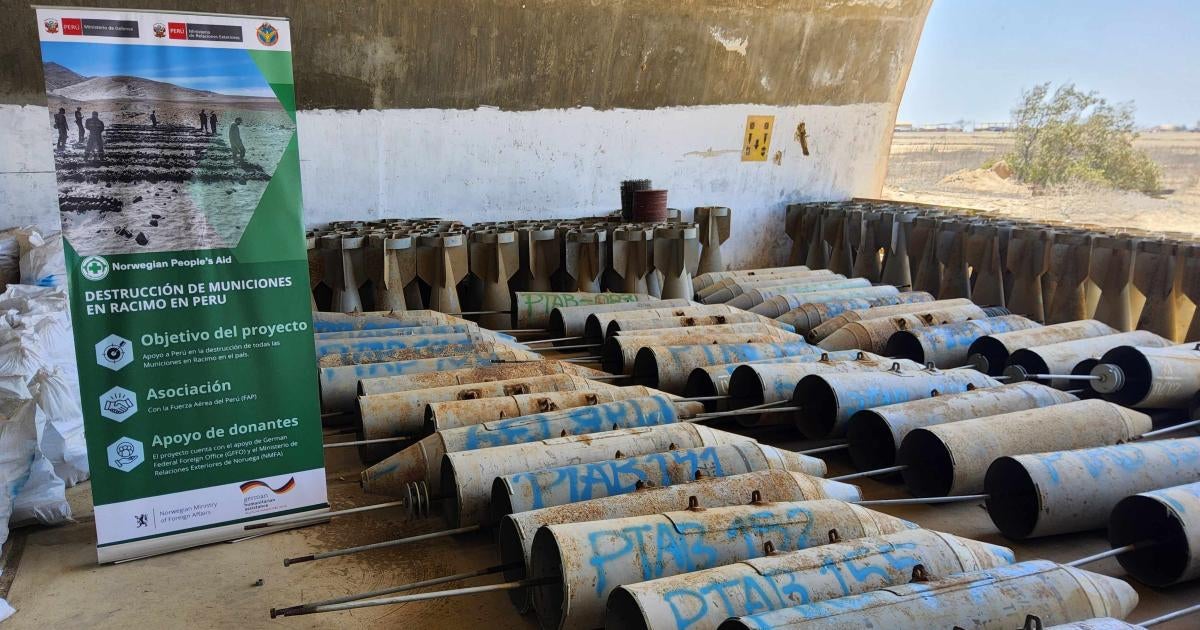[ad_1]
(Geneva, September 9, 2024) – The international treaty banning cluster munitions is making demonstrable progress, but is being tested by new use and transfers of cluster munitions by countries that have not joined it, Human Rights Watch said today in releasing an annual monitoring report on cluster munitions.
The 100-page report, “Cluster Munition Monitor 2024,” details the policy and practice of all countries with respect to the international treaty that prohibits cluster munitions and requires destruction of stockpiles, clearance of areas contaminated by cluster munition remnants, and victim assistance.
“The Convention on Cluster Munitions provides a vital framework for ending the immediate and long-term harm and suffering caused by these abhorrent weapons,” said Mary Wareham, deputy crisis, conflict, and arms director at Human Rights Watch, and editor of “Cluster Munition Monitor 2024.” “All countries should join and adhere to the convention if they are serious about protecting civilians from these weapons in the face of rising conflict.”
Cluster munitions can be fired from the ground by artillery, rockets, missiles, or mortars, or dropped by aircraft. They typically open in the air, dispersing multiple submunitions or bomblets over a wide area. Many submunitions fail to explode on initial impact, leaving unexploded duds that can indiscriminately injure and kill like landmines for years, until they are found and destroyed.
During 2023 – the latest year covered by the report’s casualty statistics – 93 percent of cluster munition casualties recorded by the Monitor were civilians. Children made up 47 percent of those killed and injured by cluster munition remnants in 2023.
Cluster munitions were used in Ukraine by Russian and Ukrainian forces in 2023 and through July 2024, while new use was also recorded in Myanmar and Syria.
Russia has used stocks of old cluster munitions and newly developed models in Ukraine since 2022. Between July 2023 and April 2024, US President Joe Biden approved five transfers to Ukraine of US cluster munitions delivered by 155mm artillery projectiles and by ballistic missiles.
None of these countries are party to the Convention on Cluster Munitions, which has 112 members.
There have been no confirmed reports or allegations of new use, production, or transfers of cluster munitions by any state party since the convention was adopted in Dublin, Ireland on May 30, 2008.
However, new use and transfers by states that have not signed the convention are testing its norms and universality. And the convention’s provision banning any assistance with prohibited activities is being put to the test, raising interpretive issues and questions over compliance with national laws.
A July 2024 report shows that cluster munitions stored at a US military base in Germany, which has ratified the convention, have been transferred to Ukraine since July 2023, transiting across Germany in the process. The US removed its stockpiled cluster munitions from Norway and the UK during 2010, but it may still hold stocks at its military bases in member countries such as Italy, Netherlands, and Spain.
All members of the convention should be clear in opposing foreign stockpiling of cluster munitions and the transit of cluster munitions across their territory, airspace, or waters, Human Rights Watch said.
In December 2023, the convention reached a major milestone when Peru completed the destruction of its stockpiled cluster munitions, as it was the last state party with declared stocks to complete this obligation. Bulgaria, Slovakia, and South Africa announced the completion of the destruction of their respective cluster munition stocks in September 2023. These developments mean that member countries have collectively now destroyed 100 percent of their declared cluster munition stocks, destroying 1.49 million cluster munitions and 179 million submunitions.
According to “Cluster Munition Monitor 2024,” 28 countries and other areas are contaminated or suspected to be contaminated by cluster munition remnants. Cluster munition attacks caused civilian casualties in Myanmar, Syria, and Ukraine in 2023; while people were killed or injured by cluster munition remnants in these countries and in Azerbaijan, Iraq, Laos, Lebanon, Mauritania, and Yemen.
Member states altogether cleared more than 83 square kilometers of affected land in 2023, destroying at least 73,348 unexploded submunitions and other cluster munition remnants. Bosnia and Herzegovina completed clearance of cluster munition remnants in August 2023, becoming the ninth state party to meet its clearance obligations under the convention.
In an alarming development, however, Lithuania enacted a law in July 2024 approving its withdrawal from the Convention on Cluster Munitions. The withdrawal will take effect six months after the United Nations and the convention’s member states are notified, unless Lithuania retracts this measure or goes to war.
“Lithuania’s ill-considered move to leave the Convention on Cluster Munitions stains its otherwise excellent reputation on humanitarian disarmament and ignores the risks of civilian harm,” Wareham said. “It’s not too late for Lithuania to heed calls to stop its planned withdrawal.”
“Cluster Munition Monitor 2024” is the 15th annual monitoring report by the Cluster Munition Coalition, the global coalition of nongovernmental organizations co-founded by Human Rights Watch. The report will be presented to countries attending the 12th meeting of the Convention on Cluster Munitions at the United Nations in Geneva on September 10-13.
[ad_2]
Source link

Leave a Reply